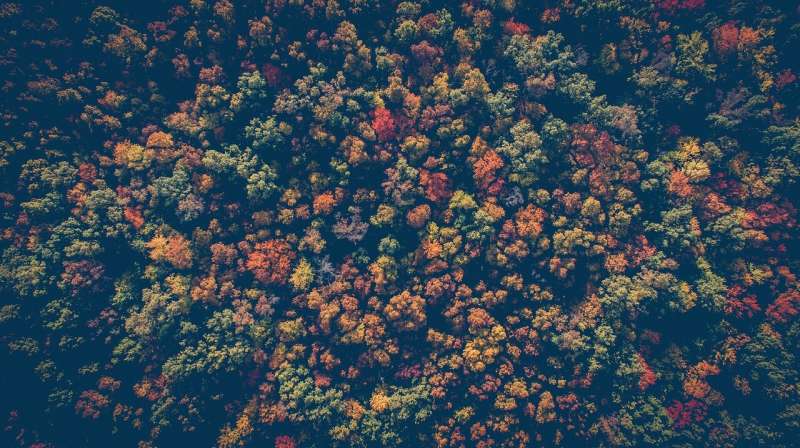Credit: CC0 Public Domain
Global forest status assessments are biased toward tree cover and do not properly consider ecological properties of forest ecosystems. Tree-cover data cannot be considered a direct indicator of forest area because tree cover includes also plantations under agriculture and urban land use. A global map of forest naturalness is needed for sustainable development.
In recent weeks, huge forest areas have burned in Siberia and the Amazon, the "lungs of the Earth," causing the acceleration of climate change and the collapse of Earth ecosystems. Humanity must immediately implement global strategies to guarantee the permanence of life as we know it on the planet.
The scientific community is discussing multiple solutions, but there is unanimous agreement on the fact that the protection and restoration of forests is a fundamental step for the mitigation of global changes and biodiversity conservation. However, there are also points of disagreement with how to define forests, how to measure them, and how to manage them sustainably. Tree cover, easily mappable with satellite instruments, represents the most used measure, but the forest is much more than a mere assemblage of trees.
In a recent work published by Conservation Biology, Alessandro Chiarucci, University of Bologna, and Gianluca Piovesan, University of Tuscia, argue that a global map of forests with different degrees of naturalness (intact, old-growth, "rewilding" and managed forests) is required for a sustainable future. This map should serve to trace the future trend of intact, old-growth and mature forests, that, thanks to the natural dynamics, represent an efficient solution for the mitigation of climate changes and the conservation of the biodiversity. The biocomplexity of natural forest landscapes cannot be reproduced by plantations of trees or secondary forests periodically disturbed by man. However, wild forests are destined to decline on the human time scale, and new socio-political solutions are required to give more space to nature.
Chiarucci and Piovesan argue that, first of all, it is necessary to identify and protect all remaining intact and old-growth forests, making humanity responsible for their integral conservation. Moreover, a certain proportion of the managed forests, at least 20 percent, should be left to natural dynamics in each biogeographic region, a rewilding that will guarantee the restoration of bio-ecological complexity in the long-term: These are the old-growth forests of the future.
Preserving and restoring natural forests means guaranteeing the conservation of the most bio-complex ecosystems with related ecological processes that are the basis of life on the planet, and the maintenance of its state of functional homeostasis. The protection of natural forests will also show future generations what the Earth was like before its deep transformation occurred during the Anthropocene.
More information: Alessandro Chiarucci et al. Need for a global map of forest naturalness for a sustainable future, Conservation Biology (2019). DOI: 10.1111/cobi.13408
Journal information: Conservation Biology
Provided by University of Tuscia























